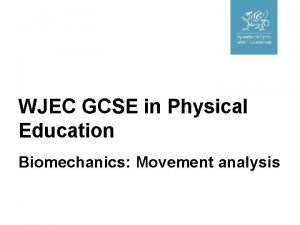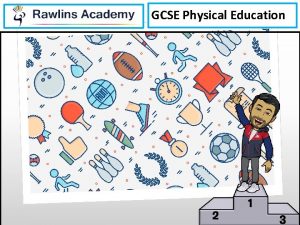GCSE Physical Education Methods of Training Continuous training


- Slides: 2

GCSE Physical Education – Methods of Training Continuous training - Involves a steady but regular pace at a moderate intensity (aerobic) which should last for at least 20 minutes. i. e. running, walking, swimming, rowing or cycling. Used by a marathon runner. Advantages Disadvantages • Ideal for beginners • Highly effective for long distance athletes • Can be extremely boring as repetitive Fartlek training – Referred to as ‘speed play’ This is a form interval training but without rest. Involves a variety of changing intensities over different distances and terrains. i. e. 1 lap at 50% max, 1 lap walking, 1 lap at 80% (aerobic and anaerobic used) Used by games players – Hockey players Advantages Disadvantages • More enjoyable than interval and continuous • Performer must be well motivated training • Good for sports which require changes in speed • Easily adapted to suit the individuals level of fitness and sport. • Variety of equipment to prevent boredom • Strengthens the whole body or the muscle groups @PEResourcesbank targeted. • Can be adapted easily to suit different sports Advantages • Quick and easy to set up. • Can mix aerobic and anaerobic exercise which replicates team games. Disadvantages • It can be hard to keep going when you start to fatigue (high motivation and self discipline needed) • Over training can occur if sufficient rest is not allowed between sessions (48 hours) Plyometrics training Involves high-impact exercises that develop power. i. e. bounding/hopping, squat jumps. Used by long jumpers, 100 m sprinters or basketball players. Advantages • Easy to set up requiring little or no equipment • Hugely effective in developing power particularly when intensity is high Disadvantages performing at the correct intensity • Can result in injury if not fully warmed up. • Can place a great stress on joints and • Difficult to assess whether performer is muscles. Weight/Resistance training – A form of training that uses progressive resistance against a muscle group. Used by cyclists. Muscular strength: High weight x low repetitions Muscular endurance: Low weight x high repetitions 9 Advantages Interval training - Involves periods of work followed by periods of rest. i. e. Sprint for 20 metre + walk back to start. Used by a 200 m sprinter Disadvantages • Requires expensive equipment • If exercises are not completed with the correct technique it can cause injury to the performer H. I. I. T Training ( High Intensity interval training ) • High intensity intervals over a short periods of time • Very good for losing weight • Excellent for metabolism Eg – high knees running / press ups / sit ups / lunges / burpees Circuit training - A series of exercises completed one after another. Each exercise is called a station. Each station should work a different area of the body to avoid fatigue. i. e. press ups, sit ups, squats, shuttle runs. Advantages Disadvantages • Quick and easy to set up • Easy to complete with large groups • Can be adjusted to be made specific for • Technique can be affected by fatigue and certain sports. i. e. netball specific circuit can increase risk of injury • Must have motivation and drive to complete the set amount of repetitions and sets. Advantages Disadvantages • Variety avoids boredom • Instructor will challenge & motivate • Great way to meet new people • Gym membership can be expensive. • Group classes are not tailored to individual needs.

GCSE Physical Education – Methods of Training @PEResourcesbank Term Keywords: Definition/notes/concept



